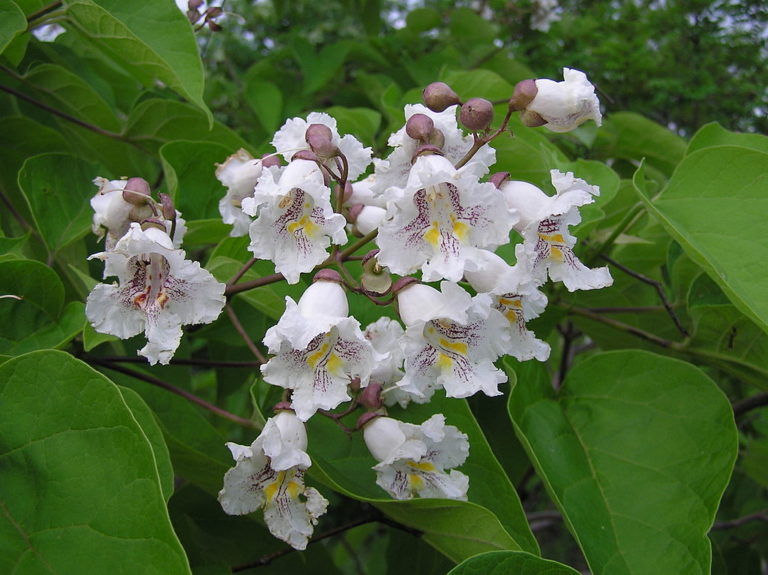This plant is not currently for sale. This is an archive page preserved for informational use.
Southern Catalpa is a medium-sized (twenty-five to forty feet, sometimes taller) highly ornamental tree bearing large, heart-shaped leaves and strikingly beautiful flowers after about 6 years of age. The leaves are barely expanded in summer when the flowers appear, great numbers of trumpet-shaped, creamy white flowers speckled with bright gold and purple. The flowers develop into very long, slender, pendulous seed pods, which provide considerable visual interest in fall/winter. Southern Catalpa is used as an ornamental tree (think: substitute for the invasive Powlonia!) but not as a street tree as it is somewhat messy, dropping all those spent flowers. It prefers moist soil and full sun. In the South, the leaves may be stripped by the Catawba Sphinx caterpillar, but it releafs easily and the Catawba worm serves as fish bait! The species originated in a narrow geographical band across the Gulf states, but has naturalized along the entire Eastern U.S. as well as some western states and Canada. Having the showiest flowers of any native American tree, it has gained the Royal Horticultural Society’s Award of Garden Merit.

